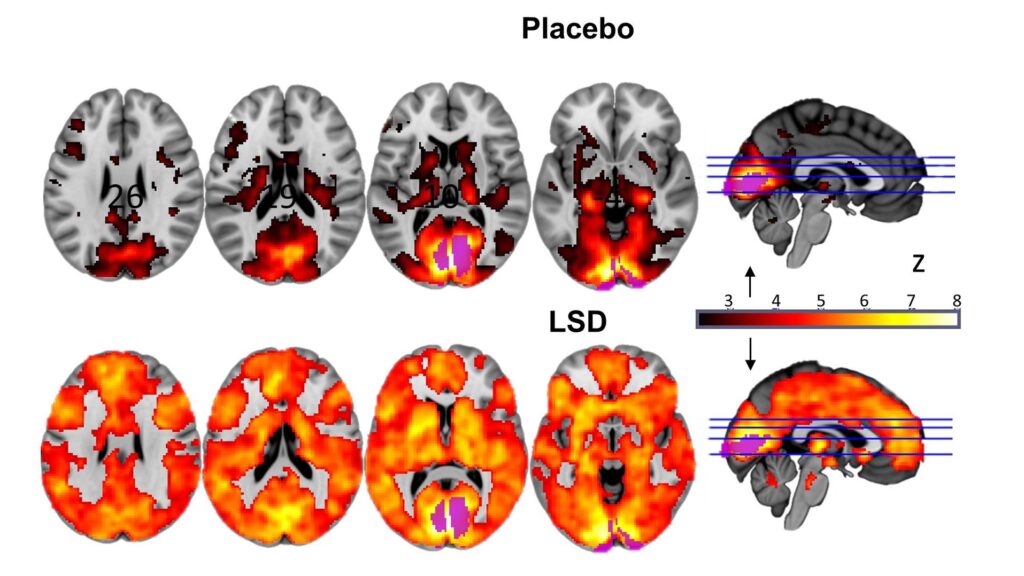In the realm of mind-altering substances, LSD stands as a symbol of fascination, controversy, and scientific inquiry. Lysergic acid diethylamide, commonly known as LSD or acid, burst onto the scene in the mid-20th century, catalyzing a cultural revolution and sparking intense debates about its potential benefits and risks. As we delve deeper into the complex tapestry of LSD, it becomes apparent that this compound holds significant sway over not just the mind, but also our understanding of consciousness, perception, and mental health.
Unraveling the Origins:
The story of LSD begins with Swiss chemist Albert Hofmann’s accidental discovery in 1943. Hofmann synthesized LSD-25 while researching lysergic acid derivatives at Sandoz Laboratories. However, it wasn’t until five years later that he accidentally ingested a small amount of the substance, experiencing its powerful psychoactive effects. This serendipitous event marked the birth of LSD’s journey into the realm of human consciousness.

A Trip into Perception:
At its core, LSD is a potent hallucinogenic compound that alters perception, cognition, and mood. Its effects are characterized by vivid sensory experiences, distortion of time and space, and profound shifts in consciousness. Users often describe “tripping” on LSD as a journey into the depths of their own psyche, where boundaries between self and reality blur, and profound insights emerge.
The Psychedelic Renaissance:
While LSD gained notoriety as a recreational drug during the countercultural movements of the 1960s, its potential therapeutic benefits soon caught the attention of researchers. In recent years, there has been a resurgence of interest in psychedelics for their potential to treat various mental health conditions, including depression, anxiety, PTSD, and addiction.
Clinical trials exploring the therapeutic effects and other psychedelics have shown promising results, with some studies suggesting significant improvements in treatment-resistant conditions. The mechanisms underlying these therapeutic effects are still being elucidated, but it’s believed that LSD acts on serotonin receptors in the brain, leading to profound changes in neural connectivity and psychological processes.

Navigating the Risks:
Despite its therapeutic potential, LSD is not without risks. Like any powerful psychoactive substance, LSD can induce adverse reactions, including anxiety, paranoia, and psychosis, particularly in individuals predisposed to mental health disorders. Additionally, or persistent perceptual disturbances, in some users, even long after the acute effects have worn off.
Moreover, the illicit production and distribution of LSD pose significant challenges in ensuring purity and dosage consistency, increasing the risk of accidental overdose or ingestion of harmful substances. As such, responsible use and harm reduction practices are essential considerations for those exploring the psychedelic experience.
Beyond the Individual:
The impact of LSD extends beyond the individual level, permeating various facets of society, culture, and spirituality. From its role in shaping the countercultural movements of the 1960s to its influence on art, music, and literature, LSD has left an indelible mark on human consciousness.
Moreover, the philosophical implications of LSD challenge conventional notions of reality and perception, prompting profound existential inquiries into the nature of existence and the limits of human consciousness. As we continue to unravel the mysteries of LSD, we are confronted with questions that transcend the confines of scientific inquiry, inviting us to ponder the very essence of what it means to be human.

Conclusion:
In the annals of human history, LSD occupies a unique position as both a catalyst for societal upheaval and a beacon of scientific exploration. Its profound effects on consciousness and perception have captivated the minds of scientists, artists, and philosophers alike, sparking a renaissance in psychedelic research and redefining our understanding of mental health and well-being.
As we navigate the intricate landscape of LSD, we must tread carefully, balancing the allure of its transformative potential with a deep respect for its inherent risks. By embracing a multidisciplinary approach that integrates scientific rigor with cultural sensitivity, we can unlock the therapeutic promise of LSD while navigating the complex interplay between mind, society, and spirit. In doing so, we may yet unlock the key to unlocking the mysteries of the human mind and usher in a new era of psychedelic enlightenment.

 10% off with code “NEXUS10”
10% off with code “NEXUS10”
